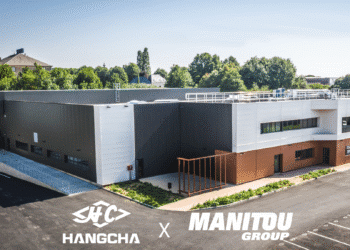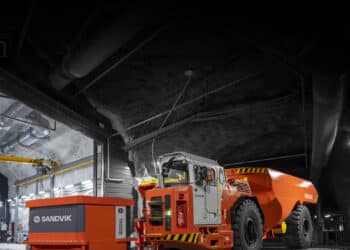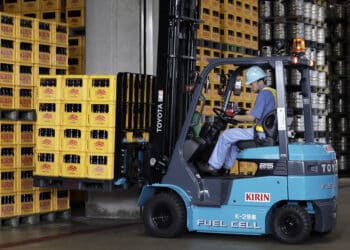Lenders are seizing more opportunities to finance innovative new equipment in the materials handling sector to support e-commerce growth.
E-commerce sales in the United States reached nearly $1.2 trillion in 2024, up 8.2% from 2023, according to business-to-business platform SellersCommerce, citing research firm Statista. Sales are projected to rise 8.9% to nearly $1.3 trillion in 2025.
Some of the biggest growth drivers in the materials handling equipment finance segment are tied to the expansion of e-commerce and logistics industries, which has in turn sparked demand for innovative machines, Joe Tomkiewicz, program manager at Wells Fargo Vendor Finance, told Equipment Finance News.
“The rising need for efficient warehouse and distribution operations is driving the increased need for electric warehouse equipment, automation and robotics adoption and an increased focus on sustainability and reducing environmental impact.”
— Joe Tomkiewicz, Wells Fargo Vendor Finance
“Equipment lenders have responded by diversifying their product offerings to offer solutions to fit customers’ operational demands,” he said.
Outlook on autonomy, robotics
The global autonomous forklift market is projected to more than double from $5.2 billion in 2025 to $13.6 billion in 2034, according to Market Research Future. Key players in this market include Toyota Material Handling, Hyster-Yale, Fox Robotics and ek robotics.
Autonomy and robotics are streamlining businesses’ logistics operations by addressing labor shortages and enhancing efficiency, Marin Tchakarov, chief executive of Austin, Texas-based Fox Robotics, told EFN.
“If you’re a general manager of a distribution center or warehouse, on one hand, you’re grappling with growth in demand, and on the other hand grappling with labor shortages,” he said. “So, it really rises the import for automation, obviously in smart ROI-driven types of ways.”
Fox Robotics showcases its Mk3 autonomous forklift. (Courtesy/Fox Robotics)
An autonomous forklift may cost between $100,000 and $120,000, compared with about $25,000 for a conventional model, according to autonomous technology provider BlueBotics. The cost of an autonomous pallet jack could range from $60,000 to $70,000, up from roughly $10,000 for a manual model.
To deliver return on investment, autonomous companies are focused on increasing throughput and automating entire processes, such as storing and retrieving goods from specific locations, Tchakarov said. Fox Robotics’ autonomous forklifts save companies at least 50% over five years compared to manual forklifts, he said. This is achieved through end-to-end automation, reducing maintenance costs with more efficient driving and “labor augmentation.”
“We promote the manual forklift driver to a supervisor and a robot wrangler,” he said. “So, this individual now is driving forklifts less and supervising robotic, autonomous forklifts more. And in that environment, where a human and machine work together, the multiplier effect of the output is tremendous.”
Lenders adapt with caution
With proof of concept becoming more established, equipment lenders are “slowly adapting” to tech-driven solutions, but some may be cautious due to limited resale markets, Wells Fargo Vendor Finance Executive Director Garrett Myers told EFN.
“Some challenges lenders will be faced with are residual value risk as it is a struggle to understand future values. Lenders will typically offer shorter-term financing options, as robotic systems can depreciate rapidly due to obsolescence or software dependency. This financing is much different than traditional forklift or conveyors.”
— Garrett Myers, Wells Fargo Vendor Finance
What about electric?
As e-commerce growth fuels “increased usage of electric material handling equipment,” financing opportunities are growing as well, Wells Fargo’s Tomkiewicz said.
“While the market for equipment lenders, in terms of proven return on investment, is well defined for electric equipment outfitted with traditional power sources [lead acid batteries, for example], the introduction of alternative power sources such as lithium ion and hydrogen are less defined in terms of secondary market acceptance, which in turn drives equipment residual values and asset disposal methodology,” he said.
Some OEMs offer incentives and grants for electric, including Toyota and Bobcat, according to their websites.
The third annual Equipment Finance Connect at the JW Marriott Nashville in Nashville, Tenn., on May 14-15, 2025, is the only event that brings together equipment dealers and lenders to share insights, attend discussions on crucial industry topics and network with peers. Learn more about the event and register here.









